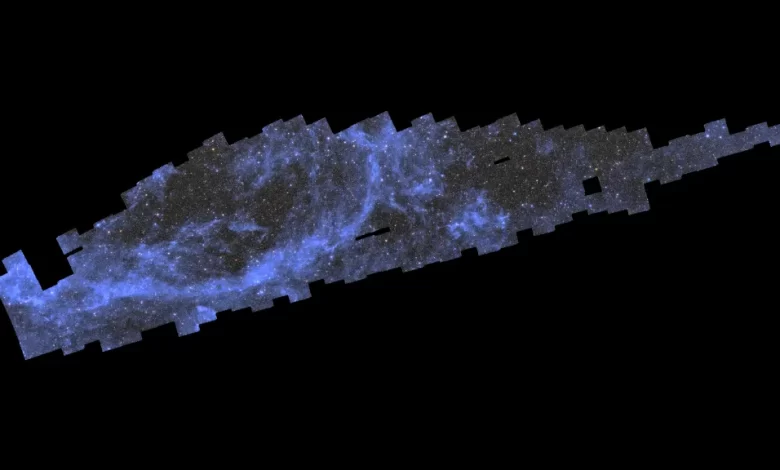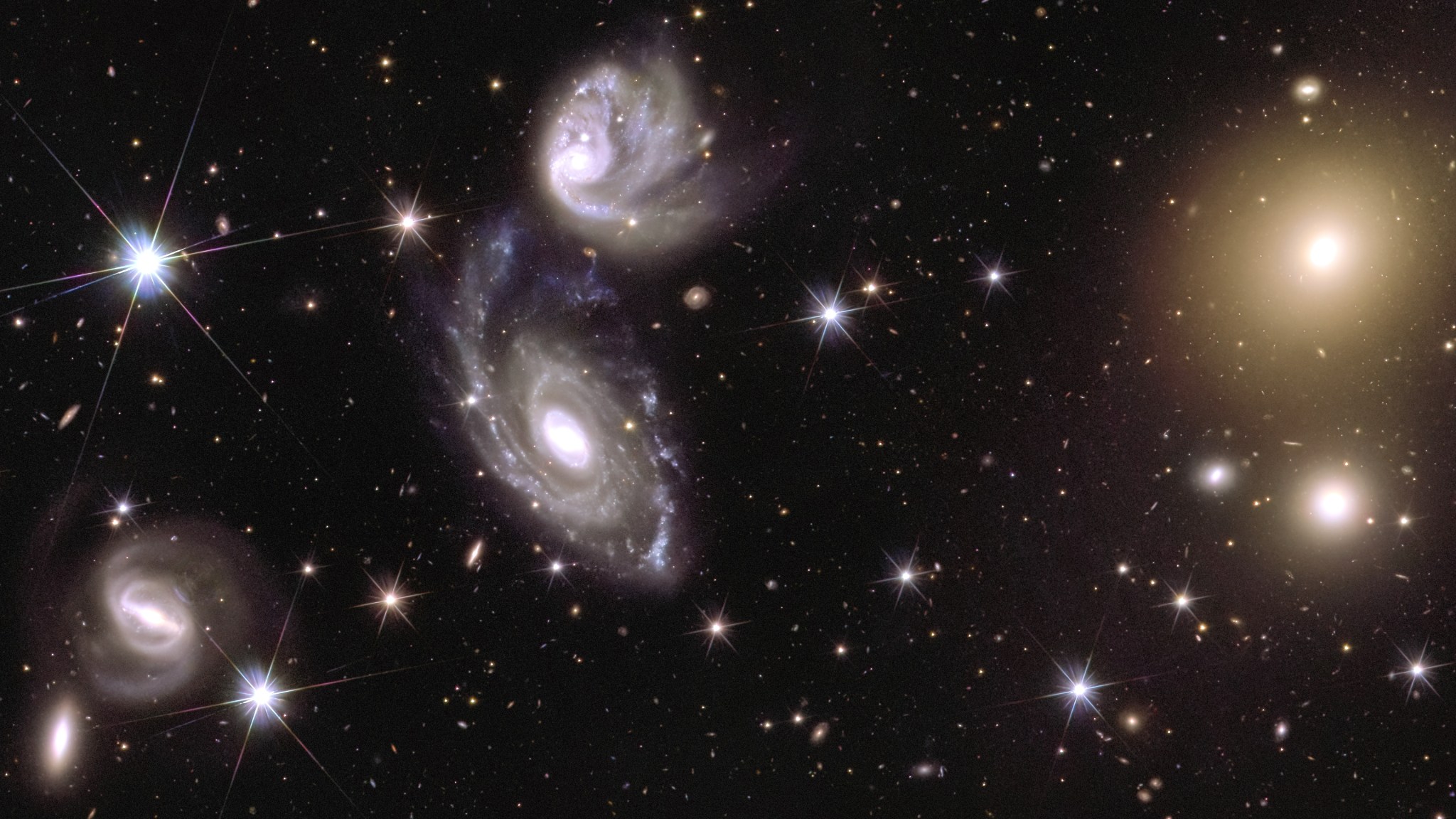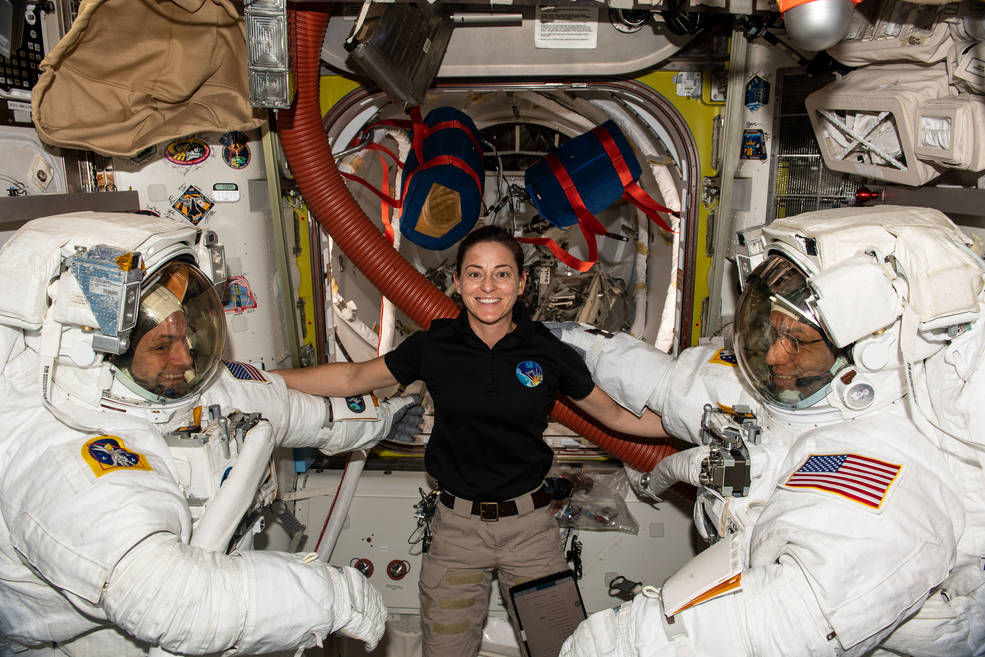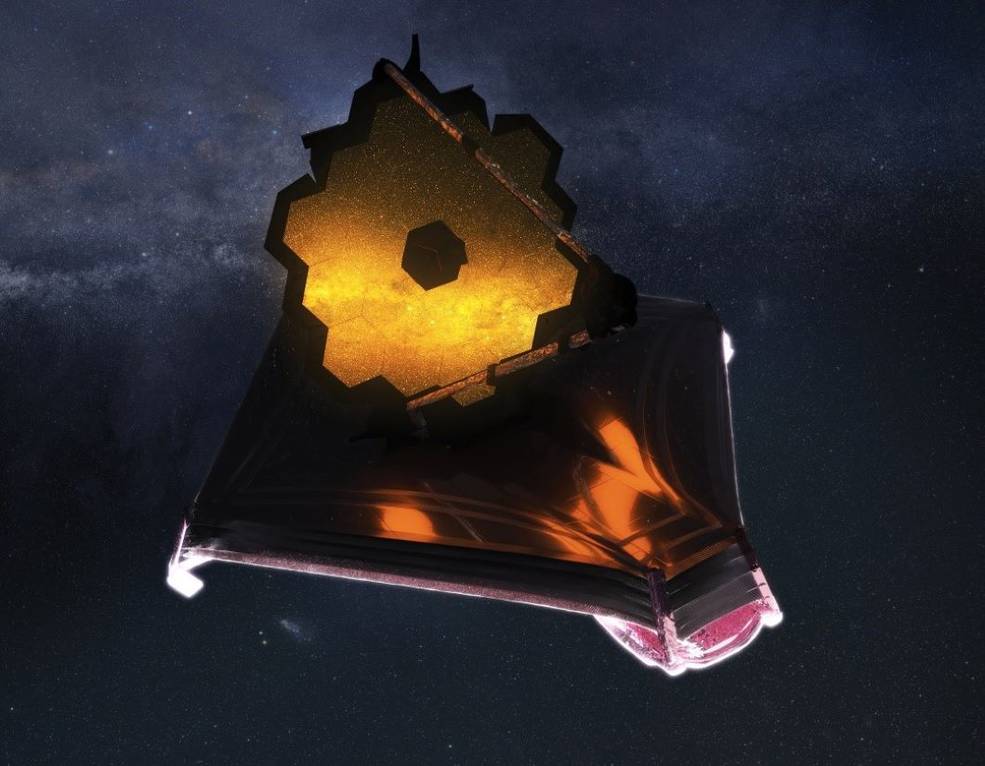Snippet of Euclid Mission’s Cosmic Atlas Released by ESA

With contributions from NASA, the mission will map a third of the sky in order to study a cosmic mystery called dark energy.
ESA (the European Space Agency) has released a new, 208-gigapixel mosaic of images taken by Euclid, a mission with NASA contributions that launched in 2023 to study why the universe is expanding at an accelerating rate. Astronomers use the term “dark energy” in reference to the unknown cause of this accelerated expansion.
The new images were released at the International Astronautical Congress in Milan on Oct. 15.
The mosaic contains 260 observations in visible and infrared light made between March 25 and April 8 of this year. In just two weeks, Euclid covered 132 square degrees of the southern sky — more than 500 times the area of the sky covered by a full Moon.
The mosaic accounts for 1% of the wide survey Euclid will conduct over six years. During this survey, the telescope observes the shapes, distances, and motions of billions of galaxies out to a distance of more than 10 billion light-years. By doing this, it will create the largest 3D cosmic map ever made.
Dive into a snippet of the great cosmic atlas being produced by the ESA Euclid mission. This video zooms in on a 208-gigapixel mosaic containing about 14 million galaxies and covering a portion of the southern sky more than 500 times the area of the full Moon as seen from Earth. Credit: ESA/Euclid/Euclid Consortium/NASA, CEA Paris-Saclay, image processing by J.-C. Cuillandre, E. Bertin, G. Anselmi; ESA/Gaia/DPAC; ESA/Planck Collaboration
This first piece of the map already contains around 100 million stars and galaxies. Some 14 million of these galaxies could be used by Euclid to study the hidden influence of dark energy on the universe.
“We have already seen beautiful, high-resolution images of individual objects and groups of objects from Euclid. This new image finally gives us a taste of the enormity of the area of sky Euclid will cover, which will enable us to take detailed measurements of billions of galaxies,” said Jason Rhodes, an observational cosmologist at NASA’s Jet Propulsion Laboratory in Southern California who is the U.S. science lead for Euclid and principal investigator for NASA’s Euclid dark energy science team.
Galaxies Galore
Even though this patch of space shows only 1% of Euclid’s total survey area, the spacecraft’s sensitive cameras captured an incredible number of objects in great detail. Enlarging the image by a factor of 600 reveals the intricate structure of a spiral galaxy in galaxy cluster Abell 3381, 470 million light-years away.

This section of the Euclid mosaic is zoomed in 600 times. A single spiral galaxy is visible in great detail within cluster Abell 3381, 470 million light-years away from us. Data from both the visible and infrared light instruments on Euclid are included.
ESA/Euclid/Euclid Consortium/NASA, CEA Paris-Saclay, image processing by J.-C. Cuillandre, E. Bertin, G. Anselmi. CC BY-SA 3.0 IGO
“What really strikes me about these new images is the tremendous range in physical scale,” said JPL’s Mike Seiffert, project scientist for the NASA contribution to Euclid. “The images capture detail from clusters of stars near an individual galaxy to some of the largest structures in the universe. We are beginning to see the first hints of what the full Euclid data will look like when it reaches the completion of the prime survey.”
Visble as well are clouds of gas and dust located between the stars in our own galaxy. Sometimes called “galactic cirrus” because they look like cirrus clouds at Earth, these clouds can be observed by Euclid’s visible-light camera because they reflect visible light from the Milky Way.
The mosaic released today is taste of what’s to come from Euclid. The mission plans to release 53 square degrees of the Euclid survey, including a preview of the Euclid Deep Field areas, in March 2025 and to release its first year of cosmology data in 2026.
NASA’s forthcoming Nancy Grace Roman mission will also study dark energy — in ways that are complementary to Euclid. Mission planners will use Euclid’s findings to inform Roman’s dark energy work. Scheduled to launch by May 2027, Roman will study a smaller section of sky than Euclid but will provide higher-resolution images of millions of galaxies and peer deeper into the universe’s past, providing complementary information. In addition, Roman will survey nearby galaxies, find and investigate planets throughout our galaxy, study objects on the outskirts of our solar system, and more.
More About Euclid
Euclid is a European mission, built and operated by ESA, with contributions from NASA. The Euclid Consortium — consisting of more than 2,000 scientists from 300 institutes in 15 European countries, the United States, Canada, and Japan — is responsible for providing the scientific instruments and scientific data analysis. ESA selected Thales Alenia Space as prime contractor for the construction of the satellite and its service module, with Airbus Defence and Space chosen to develop the payload module, including the telescope. Euclid is a medium-class mission in ESA’s Cosmic Vision Programme.
Three NASA-supported science teams contribute to the Euclid mission. In addition to designing and fabricating the sensor-chip electronics for Euclid’s Near Infrared Spectrometer and Photometer (NISP) instrument, JPL led the procurement and delivery of the NISP detectors as well. Those detectors, along with the sensor chip electronics, were tested at NASA’s Detector Characterization Lab at Goddard Space Flight Center in Greenbelt, Maryland. The Euclid NASA Science Center at IPAC (ENSCI), at Caltech in Pasadena, California, will archive the science data and support U.S.-based science investigations. JPL is a division of Caltech.
For more information about Euclid go to:
https://www.nasa.gov/mission_pages/euclid/main/index.html
For more information about Roman, go to:





